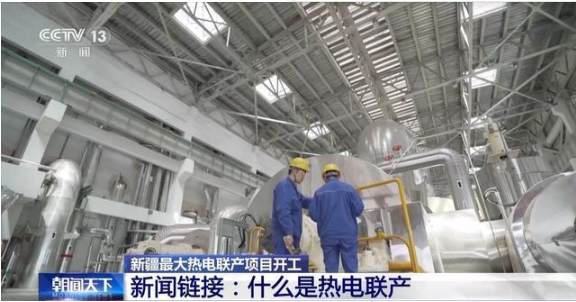Boehringer Ingelheim’s survodutide shows breakthrough improvement in liver fibrosis with no worsenin

- News builds on previously announced primary endpoint, which showed up to 83.0% of adults achieved statistically significant improvement in metabolic dysfunction-associated steatohepatitis (MASH) versus placebo (18.2%).
- New data on the secondary endpoint shows up to 52.3% of adults with fibrosis stages F1, F2 and F3 had improvement in fibrosis due to MASH.1
- Additional sub-analysis shows up to 64.5% of adults with fibrosis stages F2 and F3 (moderate to advanced scarring) achieved an improvement in fibrosis without worsening of MASH.1
- Survodutide to advance into Phase III MASH study; results reinforce its potential as a best-in-class MASH treatment and, with ongoing trials in obesity,2 could lead to clinically meaningful benefits across the cardiovascular, renal, and metabolic spectrum.
Boehringer Ingelheim today announced breakthrough results from a survodutide Phase II trial sub-analysis that demonstrate up to 64.5% of adults with fibrosis stages F2 and F3 (moderate to advanced scarring) achieved an improvement in fibrosis without worsening of metabolic dysfunction-associated steatohepatitis (MASH), versus 25.9% with placebo after 48 weeks of treatment [response difference: 38.6% (95% CI 18.1% - 59.1%), p=0.0005].1 F2 and F3 patient populations are at increased risk of developing liver-related complications.3
The full data results were presented today at the European Association for the Study of the Liver Congress (EASL) 2024 and published simultaneously in The New England Journal of Medicine1,4 The secondary endpoint shows that up to 52.3% of adults treated with survodutide (BI 456906) achieved a significant improvement in liver scarring (fibrosis) stages F1, F2 and F3 (mild to moderate or advanced scarring), versus 25.8% with placebo after 48 weeks of treatment [response difference: 26.5% (95% CI 8.37% – 44.66%), p<0.01].1
Today’s news follows data announced earlier this year when the trial met its primary endpoint.5 These results demonstrated that up to 83.0% of adults achieved a statistically significant improvement of MASH versus placebo (18.2%), reinforcing the potential of survodutide as a best-in-class treatment [response difference: 64.8% (95% CI 51.1% – 78.6%), p<0.0001].5
Survodutide is a glucagon/GLP-1 receptor dual agonist with a novel mechanism of action, and the first to show this level of fibrosis benefit in a Phase II MASH trial after 48 weeks of treatment.5,6 The glucagon agonist component in survodutide has the potential to increase energy expenditure7,8 and has a direct impact in the liver, which could contribute to the improvement of fibrosis.5 The GLP-1 agonist component decreases appetite while increasing fullness and satiety.6,9
“I am particularly excited about the findings of the Phase II trial in survodutide, which demonstrate the potential for glucagon agonism, in addition to GLP-1, to both improve MASH and shift the needle on fibrosis,” said Dr. Arun Sanyal, M.D., Professor of Medicine, Physiology and Molecular Pathology at Virginia Commonwealth University School of Medicine, and Principal Investigator of the trial. “These data position survodutide as a leading glucagon/GLP-1 receptor dual agonist that could be a game-changer for people living with MASH and clinically significant fibrosis.”
An improvement was measured as a decrease of at least one stage in fibrosis after 48 weeks of treatment in this trial.10 Fibrosis is a measurement of the progression of MASH,11 a progressive disease impacting more than 115 million people worldwide.12 MASH is caused by inflammation of the liver that can lead to fibrosis,13 and severe tissue scarring (cirrhosis) can substantially increase the risk of end-stage liver disease and liver cancer.14,15 A liver transplant may be the only treatment option at this stage,16 which can place significant financial strain on healthcare systems.17 Liver fibrosis typically worsens slowly,18 and it is easy to go undetected if the fibrosis is not extensive.19 The reversal of liver fibrosis is often challenging for advanced stages of scarring and may not be possible for cirrhosis.20
In this Phase II trial, survodutide also demonstrated significance versus placebo for all other secondary endpoints after 48 weeks of treatment.1 Actual treatment results showed that up to 87.0% of adults achieved at least a 30% relative reduction in liver fat versus 19.7% with placebo, as well as a relative reduction in liver fat content of up to 64.3% versus 7.3% with placebo.1 The absolute change from baseline in Non-alcoholic Fatty Liver Disease Activity Score (NAS, which is used to measure improvement in MASH) in actual treatment results was up to -3.3 with survodutide versus -0.4 with placebo.1
“Today’s breakthrough fibrosis results further reinforce survodutide’s potential as a best-in-class treatment for people living with MASH. We will advance quickly into Phase III trials,” said Carinne Brouillon, Head of Human Pharma, Boehringer Ingelheim. “New treatments are urgently needed for MASH, a disease connected with cardiovascular, renal and metabolic conditions like obesity, and we are excited to continue these important discussions with healthcare authorities.”
Survodutide is licensed to Boehringer Ingelheim from Zealand Pharma, with Boehringer solely responsible for development and commercialization globally. Zealand has a co-promotion right in the Nordic countries.
In this trial, survodutide demonstrated safety data consistent with GLP-1 based molecules, with no new safety data concerns.1 Survodutide was granted U.S. Food and Drug Administration (FDA) Fast Track Designation in 2021,21 and the European Medicines Agency (EMA) granted access to the Priority Medicine (PRIME) Scheme for MASH with fibrosis in November last year.22
Survodutide is also being explored in five Phase III studies for people living with overweight and obesity,2,23,24 both of which are associated with MASH.25 An additional Phase III trial is evaluating if survodutide helps people living with overweight or obesity, with a confirmed or presumed diagnosis of MASH, reduce liver fat and lose weight.26
Notes to Editors
About the data
Boehringer Ingelheim’s Phase II study in MASH and fibrosis stages F1, F2 and F3 included two analyses: planned (assigned dose at randomization) and actual (dose at the end of treatment).1 This press release reports on actual data results for participants (295 patients were randomized, and 293 received at least one dose of treatment and were analyzed) across both the primary and secondary endpoints. The additional sub-analysis among people with fibrosis F2 and F3 was conducted among patients with paired biopsies (223 of 293 patients had fibrosis F2 and F3 at baseline (76.2%) of which 170 had paired biopsies).1
Use of MASH terminology
Boehringer Ingelheim’s Phase II trial is registered on clinicaltrials.gov as ‘A Study to Test Safety and Efficacy of BI456906 in Adults With Non-alcoholic Steatohepatitis (NASH) and Fibrosis (F1-F3)’.
This trial was registered prior to a 2023 update in nomenclature made by a number of multinational liver societies including EASL, AASLD and ALEH.27 Their recommendation was to update non-alcoholic fatty liver disease (NAFLD) to metabolic dysfunction-associated steatotic liver disease (MASLD), and to update non-alcoholic steatohepatitis (NASH) with metabolic dysfunction-associated steatohepatitis (MASH).27
To reflect these recommendations, Boehringer Ingelheim has adopted the use of MASH to describe this Phase II trial.
About metabolic dysfunction-associated steatohepatitis (MASH)
MASH is a chronic and progressive liver disease caused by a build-up of fat in the liver,13,28 and is a more severe form of metabolic dysfunction-associated steatotic liver disease (MASLD).29 In the US, cases of MASH are predicted to rise by 63% between 2015 and 2030, from 16.5 million to 27.0 million cases.16 MASH is a disease closely associated with connected cardiovascular, renal, and metabolic diseases,30,31 and it is estimated that 34% of people living with obesity also have MASH.25
MASH severity is assessed using a scale that ranges from F0 to F4, which measures the level of fibrosis (scarring):32
- F0-F1: indicates no or mild fibrosis
- F2-F3: indicates moderate or advanced fibrosis
- F4: indicates cirrhosis
About the trial (NCT04771273)
This is a Phase II, randomized double-blind placebo-controlled dose-finding trial of 295 participants that evaluates weekly subcutaneous injections of survodutide in people living with MASH and fibrosis (F1, F2 and F3) among adults both with and without type 2 diabetes.10
The primary endpoint of trial is the percentage of participants achieving histological improvement of MASH without worsening of fibrosis after 48 weeks of treatment.10 A histological improvement of MASH is defined as a decrease of ≥2 points on the Non-alcoholic Fatty Liver Disease Activity Score (NAS – total score ranges from 0-8), including ≥1 point decrease in NASH sub-score for lobular inflammation or ballooning, and no increase in fibrosis stage.10 The NAS represents the sum of scores for steatosis (a build-up of fat in the liver33), lobular inflammation (inflammatory cells34) and ballooning (a type of liver cell degeneration35).
Secondary outcome measures include:10
- At least 30% relative reduction in liver fat content after 48 weeks of treatment compared to baseline
- Absolute and relative change of liver fat content from baseline after 48 weeks of treatment
- Improvement of fibrosis, defined as at least one stage decrease in fibrosis stage after 48 weeks of treatment
- Absolute change from baseline in total score for NAS after 48 weeks of treatment
The trial consisted of dose escalation to either 2.4mg, 4.8mg and 6.0mg treatment groups for up to 24 weeks, and dose maintenance for 24 weeks.10
About survodutide (BI 456906)
Survodutide is a glucagon/GLP-1 receptor dual agonist that activates both the glucagon and GLP-1 receptors, which are critical to controlling metabolic functions.6
Survodutide is licensed to Boehringer Ingelheim from Zealand Pharma, with Boehringer solely responsible for development and commercialization globally. Zealand has a co-promotion right in the Nordic countries. Survodutide is part of Boehringer Ingelheim’s research and development portfolio in the cardiovascular, renal, and metabolic disease areas.
Survodutide was granted U.S. FDA Fast Track Designation in May 2021 for the treatment of MASH and fibrosis,21 and it was accepted to the EMA PRIME scheme in November 2023.22
Boehringer also studied survodutide in a 2-part Phase I trial among people with cirrhosis (F4) and varying degrees of liver dysfunction.36 The purpose of Part 1 was to find out whether cirrhosis (F4) and varying degrees of liver dysfunction influences how survodutide is taken up in the body, and the purpose of Part 2 was to find out whether having cirrhosis (F4) and varying degrees of liver dysfunction influences how people with overweight and obesity tolerate survodutide treatment for 28 weeks.36
Survodutide is also being evaluated in five Phase III studies for people living with overweight and obesity.2,23,24 SYNCHRONIZE-1 and SYNCHRONIZE-2 include sub-populations of patients with comorbidities, without and with type 2 diabetes, respectively.2 SYNCHRONIZE-CVOT includes a sub-population of patients with cardiovascular disease, chronic kidney disease, or with risk factors for cardiovascular disease.2 SYNCHRONIZE-JP in Japan and SYNCHRONIZE-CN in China are exploring survodutide for sub-populations of people living with obesity.23,24 SYNCHRONIZE-JP explores the relative change in liver fat from baseline to week 76 when treated with survodutide versus placebo, as a key secondary endpoint.24
An additional Phase III trial called SYNCHRONIZE-MASLD is evaluating if survodutide helps people living with overweight or obesity, with a confirmed or presumed diagnosis of MASH, reduce liver fat and lose weight.26 The double-blind 48-week, placebo-controlled trial initiated enrollment in March this year.26
About Boehringer Ingelheim
Boehringer Ingelheim is working on breakthrough therapies that transform lives, today and for generations to come. As a leading research-driven biopharmaceutical company, the company creates value through innovation in areas of high unmet medical need. Founded in 1885 and family-owned ever since, Boehringer Ingelheim takes a long-term, sustainable perspective. More than 53,000 employees serve over 130 markets in the two business units Human Pharma and Animal Health. Learn more at www.boehringer-ingelheim.com/uk (UK and Ireland) or www.boehringer-ingelheim.com (rest of world).
Boehringer Ingelheim’s Intended Audiences Notice
This press release is issued from our Corporate Headquarters in Ingelheim, Germany and is intended to provide information about our global business. Please be aware that information relating to the approval status and labels of approved products may vary from country to country, and a country-specific press release on this topic may have been issued in the countries where we do business.
References:
1 Sanyal, Arun J. "Glucagon and GLP-1 receptor dual agonist survodutide improved liver histology in people with MASH and fibrosis: Results from a randomized, double-blind, placebo-controlled phase 2 trial”. Oral presentation at European Association for the Study of the Liver Congress, Milan, Italy. 7June 2024. Abstract #LB117, presentation #GS-006.
2 “Phase III studies to investigate survodutide for people living with obesity and overweight, with and without diabetes, cardiovascular disease and chronic kidney disease.” Boehringer Ingelheim. www.boehringer-ingelheim.com/phase-3-studies-survodutide-obesity-and-overweight. Accessed June 2024
3 Sanyal, Arun J., et al. “Prospective Study of Outcomes in Adults with Nonalcoholic Fatty Liver Disease.” The New England Journal of Medicine. Vol. 385, no. 17, 2021, pp. 1559-1569. doi: 10.1056/NEJMoa2029349
4 Sanyal, Arun J., et al. “A Phase 2 Randomized Trial of Survodutide in MASH and Fibrosis.” The New England Journal of Medicine. June 2024. doi: 10.1056/NEJMoa2401755
5 Top-line Results From A Study to Test Efficacy of BI456906 in Adults With Non-alcoholic Steatohepatitis (NASH) and Fibrosis (F1-F3).” Boehringer Ingelheim. Data on file
6 Zimmerman, Tina, et al. “BI 456906: Discovery and preclinical pharmacology of a novel GCGR/GLP-1R dual agonist with robust anti-obesity efficacy.” Molecular Metabolism. Vol. 66, Dec. 2022, p. 101633. doi: 10.1016/j.molmet.2022.101633.
7 Tan, Tricia M., et al. “Coadministration of glucagon-like peptide-1 during glucagon infusion in humans results in increased energy expenditure and amelioration of hyperglycemia.” Diabetes. Vol. 62, no. 4, Mar. 2013, pp. 1131-36. doi: 10.2337/db12-0797
8 Salem, V., et al. “Glucagon increases energy expenditure independently of brown adipose tissue activation in humans.” Diabetes, Obesity and Metabolism. Vol. 18, no. 1, Nov. 2015, pp. 72-81. doi: 10.1111/dom.12585.
9 Shah, Meera, and Adrian Vella. “Effects of GLP-1 on appetite and weight.” Reviews in Endocrine and Metabolic Disorders. Vol. 15, no. 3, May 2014, pp. 181 – 87. doi: 10.1007/s11154-014-9289-5.
10 “A Study to Test Efficacy of BI456906 in Adults With Non-alcoholic Steatohepatitis (NASH) and Fibrosis (F1-F3).” ClinicalTrials.gov. classic.clinicaltrials.gov/ct2/show/NCT04771273. Accessed June 2024
11 Stål. Per. “Liver fibrosis in non-alcoholic fatty liver disease - diagnostic challenge with prognostic significance.” World Journal of Gastroenterology. Vol. 21, no. 39, Jan. 2015, p. 11077. doi: 10.3748/wjg.v21.i39.11077
12 “International NASH Day June 10, 2021.” Global Liver Institute. June 2021. https://ecpc.org/wp-content/uploads/2021/09/IND-report-2021-web.pdf Accessed June 2024
13 Ramai, Daryl, et al. “Progressive Liver Fibrosis in Non-Alcoholic Fatty Liver Disease.” Cells. Vol. 10, no. 12, Dec. 2021, p. 3401. doi: 10.3390/cells10123401.
14 Dyson, Jessica, et al. “Hepatocellular cancer: The impact of obesity, type 2 diabetes and a multidisciplinary team.” Journal of Hepatology. Vol. 60, no. 1, Jan. 2014, pp. 110–17. doi: 10.1016/j.jhep.2013.08.011.
15 Adams, Leon A., et al. “Non-alcoholic fatty liver disease and its relationship with cardiovascular disease and other extrahepatic diseases.” Gut. Vol. 66, no. 6, Mar. 2017, pp.1138-53. doi: 10.1136/gutjnl-2017-313884
16 Estes. Chris, et al. “Modelling the epidemic of nonalcoholic fatty liver disease demonstrates an exponential increase in burden of disease.” Hepatology. Vol 67, no. 1, Dec. 2017, pp. 123-33. doi: 10.1002/hep.29466.
17 Khalil, Amjad, et al. “New Developments and Challenges in Liver Transplantation.” Journal of Clinical Medicine. Vol 12, no. 17, Aug. 2023, pp 5586. doi: 10.3390/jcm12175586.
18 Kumar, Rahul, et al. “A practical clinical approach to liver fibrosis.” Singapore Medical Journal. Vol. 59, no. 12, Dec. 2018, pp 628-633. doi: 10.11622/smedj.2018145. PMID: 30631885; PMCID: PMC6301869.
19 Pinzani, Massimo, et al. “Fibrosis in chronic liver diseases: diagnosis and management.” Journal of Hepatology. Vol. 42, no. 1, April 2005, S22-36. doi: 10.1016/j.jhep.2004.12.008
20 Zhang, Chun-Ye, et al. “Treatment of liver fibrosis: Past, current, and future.” World Journal of Hepatology. Vol. 15, no. 6, June 2023, pp. 755-74. doi: 10.4254/wjh.v15.i6.755.
21 “Boehringer Ingelheim and Zealand Pharma Received FDA Fast Track Designation for Investigational Treatment for NASH.” Boehringer Ingelheim. www.boehringer-ingelheim.com/us/press-release/boehringer-ingelheim-and-zealand-pharma-receive-fda-fast-track-designation. Accessed June 2024
22 “List of medicines currently in PRIME scheme.” European Medicines Agency. December 2023. www.ema.europa.eu/en/documents/other/list-medicines-currently-prime-scheme_en.xlsx. Accessed June 2024
23 “A Study to Test Whether BI 456906 Helps Chinese People Living With Overweight or Obesity to Lose Weight.” Clinicaltrials.gov. clinicaltrials.gov/study/NCT06214741. Accessed June 2024
24 “A Study to Test Whether BI 456906 Helps Japanese People Living With Obesity Disease (SYNCHRONIZE™JP).” Clinicaltrials.gov. clinicaltrials.gov/study/NCT06176365. Accessed June 2024
25 Quek, Jingxuan, et al. ”Global prevalence of non-alcoholic fatty liver disease and non-alcoholic steatohepatitis in the overweight and obese population: a systematic review and meta-analysis.” The Lancet Gastroenterology & Hepatology. Vol. 8, no. 1, Jan. 2023, pp. 20-30. https://doi.org/10.1016/S2468-1253(22)00317-X
26 “A Study to Test Whether Survodutide Helps People Living With Obesity or Overweight and With a Confirmed or Presumed Liver Disease Called Non-alcoholic Steatohepatitis (NASH) to Reduce Liver Fat and to Lose Weight”. Clinicaltrials.gov. https://clinicaltrials.gov/study/NCT06309992. Accessed June 2024.
27 Multinational liver societies announce new “Fatty” liver disease nomenclature that is affirmative and non-stigmatizing.” EASL. easl.eu/news/new_fatty_liver_disease_nomenclature-2. Accessed June 2024
28 “Nonalcoholic Fatty Liver Disease (NALFD) and NASH.” National Institute of Diabetes and Digestive and Kidney Diseases. www.niddk.nih.gov/health-information/liver-disease/nafld-nash. Accessed June 2024
29 “Nonalcoholic steatohepatitis (NASH): Symptoms & complications (2023).” American Liver Foundation. liverfoundation.org/liver-diseases/fatty-liver-disease/nonalcoholic-steatohepatitis-nash/. Accessed June 2024
30 Musso, Giovanni, et al. “Association of non-alcoholic fatty liver disease with chronic kidney disease: a systematic review and meta-analysis.” PLoS Medicine. Vol. 11, no. 7, July 2014, p. E1001680. doi: 10.1371/journal.pmed.1001680.
31 Schnell. Oliver, et al. “CVOT Summit Report 2023: new cardiovascular, kidney, and metabolic outcomes.” Cardiovascular Diabetology. Vol. 23, no. 1, Mar. 2024. doi: 10.1186/s12933-024-02180-8.
32 Kleiner, David E., et al. “Nonalcoholic Steatohepatitis Clinical Research Network. Design and validation of a histological scoring system for nonalcoholic fatty liver disease.” Hepatology. Vol. 41, no. 6, June 2005, pp. 1313-21. doi: 10.1002/hep.20701.
33 “Non-alcoholic fatty liver disease (NAFLD).” NHS. www.nhs.uk/conditions/non-alcoholic-fatty-liver-disease. Accessed June 2024
34 Vanderbeck, Scott, et al. “Automatic quantification of lobular inflammation and hepatocyte ballooning in nonalcoholic fatty liver disease liver biopsies.” Human Pathology. Vol. 46, no. 5, May 2015, pp. 767-75. doi: 10.1016/j.humpath.2015.01.019.
35 Caldwell, Stephan, et al. “Hepatocellular ballooning in NASH.” Journal of Hepatology. Vol. 53, no. 4, Oct. 2010, pp 719-23. doi: 10.1016/j.jhep.2010.04.031.
36 “A Study to (1) Compare How BI 456906 is Taken up in the Body of Healthy People and People With Liver Problems and (2) Find Out How People With Overweight and Obesity, With and Without Liver Problems, Tolerate Different Doses of BI 456906.” Clinicaltrials.gov. clinicaltrials.gov/study/NCT05296733. Accessed June 2024
- 提高生产效率,石墨钎焊治具的应用及优势分析
- 友邦吊顶总经理韩耘:变频暖立方X7,致力于成为顶部嵌入式电器领导者
- 湖南省韶山管理局举办“缅怀先烈 致敬英雄”全民阅读主题活动
- 艺术大师范曾官宣婚讯,琴瑟和鸣神仙眷侣!
- 中国传媒大学&俺来也发布《2023—2024中国大学生消费洞察白皮书》
- 杨紫新剧《要久久爱》开播,跨年龄层反差演技获赞
- 泰国皇家护肤品 FILTERS滤镜之谜面膜还会让女星追捧吗?
- 创新大赛专访丨东鹏饮料荣膺2023年度卓越雇主品牌:让奋斗者拥有拼搏的能量
- Lime Trading与新创公司TakeProfit合作,为下一代零售交易商赋能
- 「一单多报」系统 促进粤港两地经贸发展 中科智城与LSCM及广州软件院共建粤港智慧城市与数字经济联合实验室
- Laserfiche人工智能文档摘要:简化内容消费并提高生产力
- AMEC 宣布新任主席
- Rimini Street Launches Rimini Custom™ to Expand its Award-Winning Services to a Broader Scope of Ent
- WhatsApp协议注册软件,WS云控注册助你注册更简单!
- 福州爱尔眼科:老眼昏花,戴了眼镜还是看不清!很可能是……
- AI未来,创意无限,乔治白联合东华大学发布2025中国校服流行趋势
- 探寻义乌,发现礼品的新世界
- 锦勇,辐射防护服|手套,眼镜,围裙,大褂,帽子,护臂,鞋套
- 爱堡集团数智掘金—共绘上市蓝图
- 携手助力青少年体育梦!功勋教练李永波携奥运冠军、世界冠军走进漳州一中!
- Instagram解封养号利器,ins自动化采集博主软件亮相!
- 越来越多买房者追随 招商蛇口究竟做对了什么?
- McWhorter Foundation To Sue Nelson Peltz & Trian Partners For Market Manipulation
- Pragmatic欢迎英国王室安妮长公主殿下莅临Pragmatic工业园,为英国首家300mm半导体晶圆制造厂揭幕
- “春糖节”来啦!第110届全国糖酒会引爆消费热情
- PIMCO Announces 2024 Managing Directors
- St Kitts and Nevis Paves the Way for its Global Citizens to “Connect, Collaborate and Celebrate” at
- 精工电联:赋能科技互联,精工电联的集成线缆定制服务(小批量、多品类产品高效解决方案)
- 产业数字化 为何需要一朵实体云?
- 2024 CACLP丨神州医疗:多模态科研平台赋能药物基因组学临床科研高质量发展
推荐
-
 私域反哺公域一周带火一家店!
三四线城市奶茶品牌茶尖尖两年时间做到GMV
资讯
私域反哺公域一周带火一家店!
三四线城市奶茶品牌茶尖尖两年时间做到GMV
资讯
-
 大家一起关注新疆乌什7.1级地震救援见闻
看到热气腾腾的抓饭马上就要出锅、村里大家
资讯
大家一起关注新疆乌什7.1级地震救援见闻
看到热气腾腾的抓饭马上就要出锅、村里大家
资讯
-
 奥运冠军刘翔更新社交账号晒出近照 时隔473天更新动态!
2月20日凌晨2点,奥运冠军刘翔更新社交账号晒
资讯
奥运冠军刘翔更新社交账号晒出近照 时隔473天更新动态!
2月20日凌晨2点,奥运冠军刘翔更新社交账号晒
资讯
-
 王自如被强制执行3383万
据中国执行信息公开网消息,近期,王自如新增一
资讯
王自如被强制执行3383万
据中国执行信息公开网消息,近期,王自如新增一
资讯
-
 国足13次出战亚洲杯首次小组赛0进球
北京时间1月23日消息,2023亚洲杯小组
资讯
国足13次出战亚洲杯首次小组赛0进球
北京时间1月23日消息,2023亚洲杯小组
资讯
-
 产业数字化 为何需要一朵实体云?
改革开放前,国内供应链主要依靠指标拉动,其逻
资讯
产业数字化 为何需要一朵实体云?
改革开放前,国内供应链主要依靠指标拉动,其逻
资讯
-
 新增供热能力3200万平方米 新疆最大热电联产项目开工
昨天(26日),新疆最大的热电联产项目—&md
资讯
新增供热能力3200万平方米 新疆最大热电联产项目开工
昨天(26日),新疆最大的热电联产项目—&md
资讯
-
 抖音直播“新红人”进攻本地生活领域
不难看出,抖音本地生活正借由直播向本地生活
资讯
抖音直播“新红人”进攻本地生活领域
不难看出,抖音本地生活正借由直播向本地生活
资讯
-
 海南大学生返校机票贵 有什么好的解决办法吗?
近日,有网友在“人民网领导留言板&rdqu
资讯
海南大学生返校机票贵 有什么好的解决办法吗?
近日,有网友在“人民网领导留言板&rdqu
资讯
-
 中国减排方案比西方更有优势
如今,人为造成的全球变暖是每个人都关注的问
资讯
中国减排方案比西方更有优势
如今,人为造成的全球变暖是每个人都关注的问
资讯

